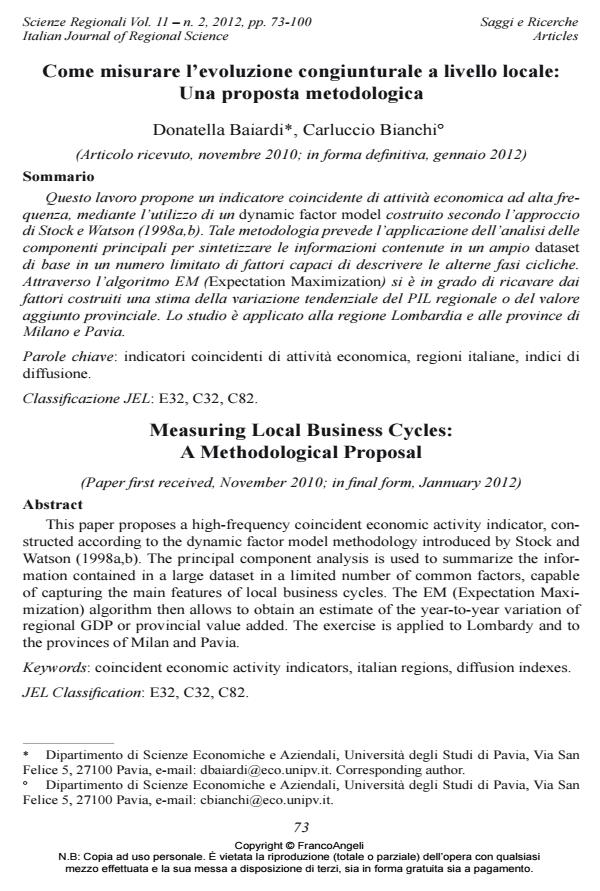Measuring Local Business Cycles: A Methodological Proposal
Journal title SCIENZE REGIONALI
Author/s Donatella Baiardi, Carluccio Bianchi
Publishing Year 2012 Issue 2012/2
Language Italian Pages 28 P. 73-100 File size 354 KB
DOI 10.3280/SCRE2012-002005
DOI is like a bar code for intellectual property: to have more infomation
click here
Below, you can see the article first page
If you want to buy this article in PDF format, you can do it, following the instructions to buy download credits

FrancoAngeli is member of Publishers International Linking Association, Inc (PILA), a not-for-profit association which run the CrossRef service enabling links to and from online scholarly content.
This paper proposes a high-frequency coincident economic activity indicator, constructed according to the dynamic factor model methodology introduced by Stock and Watson (1998a,b). The principal component analysis is used to summarize the information contained in a large dataset in a limited number of common factors, capable of capturing the main features of local business cycles. The EM (Expectation Maximization) algorithm then allows to obtain an estimate of the year-to-year variation of regional GDP or provincial value added. The exercise is applied to Lombardy and to the provinces of Milan and Pavia.
Keywords: Coincident economic activity indicators, italian regions, diffusion indexes.
Jel codes: E32, C32, C82.
Donatella Baiardi, Carluccio Bianchi, Come misurare l’evoluzione congiunturale a livello locale: Una proposta metodologica in "SCIENZE REGIONALI " 2/2012, pp 73-100, DOI: 10.3280/SCRE2012-002005